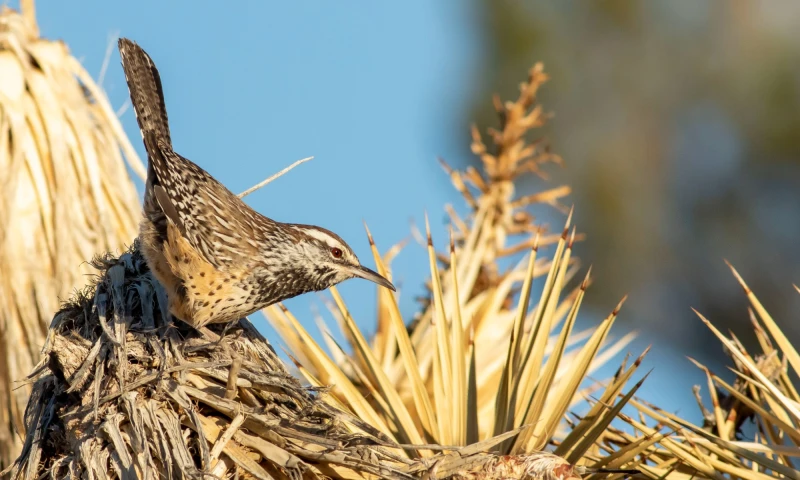By Alex Harper
Neither in the depths of winter nor feeling like spring, February is a month that may feel more stagnant than January or March. The increasing daylight triggers hormone production that may prepare birds for breeding or migratory behavior. The behavior changes birds may be obvious in some species but invisible to others. There are some birds on the move in February, and they are the harbingers of an incoming spring.
For our local breeding birds, many will be engaging in territorial behavior or “tuning up” their songs. Residential birds at low elevations, such as in the Las Vegas area, will be most obvious. You’ll notice doves, hummingbirds and mockingbirds chasing each other around or displaying. You may even catch hummingbirds in the act of collecting nest materials; spider webs are amongst some of their favorite materials. The songs of House Finches may be heard on almost every city block in town.
At local parks such as Sunset Park, the Henderson Bird Viewing Preserve, and Pittman Wash, you may catch the grating song of the Black-tailed Gnatcatcher, a rambling Crissal Thrasher, or stuttering song of the Abert’s Towhee. Since these local birds are nonmigratory, they can begin breeding activity in this environment. For migratory birds, they are weeks or months away from arriving at their territory.
At our parks with water and our reservoirs, we could still see influxes of winter-driven waterfowl, especially in diving ducks like goldeneyes, Red-breasted and Common Mergansers. Cooler temperatures to the north or farther inland can freeze ponds over, which directly affects the ability for waterfowl to forage for food. It appears that diving waterfowl are impacted, and they’ll move around throughout February, especially following late winter freezes.
February is a great gull-watching month. Gulls are very dynamic, and their wanderings are less understood amongst families of birds. Virtually any species can show up at Lake Mead during February. The lake is rather large, with countless coves and stretches of shoreline that is rarely covered by birders. The determined or lucky birder may turn up something other than a Ring-billed, California, or Herring Gull at 33-Hole, Boulder Beach, or Hemenway Harbor. With some luck, any unusual or rare gull will linger in an accessible area following its discovery for multiple days so that people can observe it. With so little coverage of so much lakeshore, we are undoubtedly unaware of just how many ducks, loons, and gulls are going undetected on the reservoir.
Some migratory birds are on the way from south of the border. Fast-flying swallows are amongst the first to arrive, and they’ll trickle into wetlands such as Clark County Wetlands Park and the Henderson Bird Viewing Preserve. Migratory Northern Rough-winged Swallows will join the small winter flocks at the bird preserve, as will Tree Swallows, followed by a few Barns and Violet-greens. Visit the Henderson Bird Viewing Preserve towards the end of February, and you’ll notice the slow accumulation of swallows.
Once the trees begin to “leaf out” again, insect and bird activity will escalate. From March to May, we will see a surge of spring-related activity. For most birders in Southern Nevada, the most exciting time of the year is yet to come.











